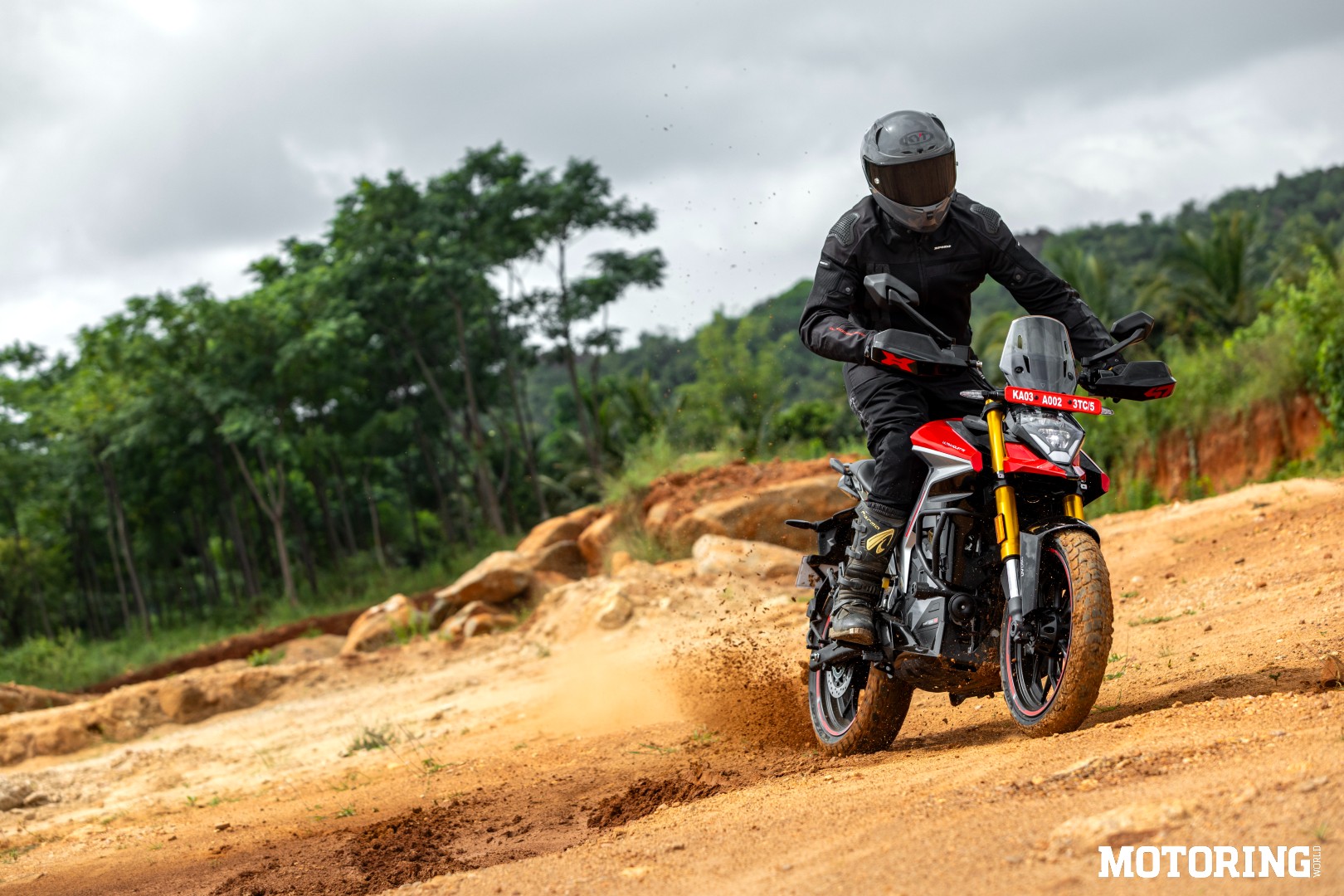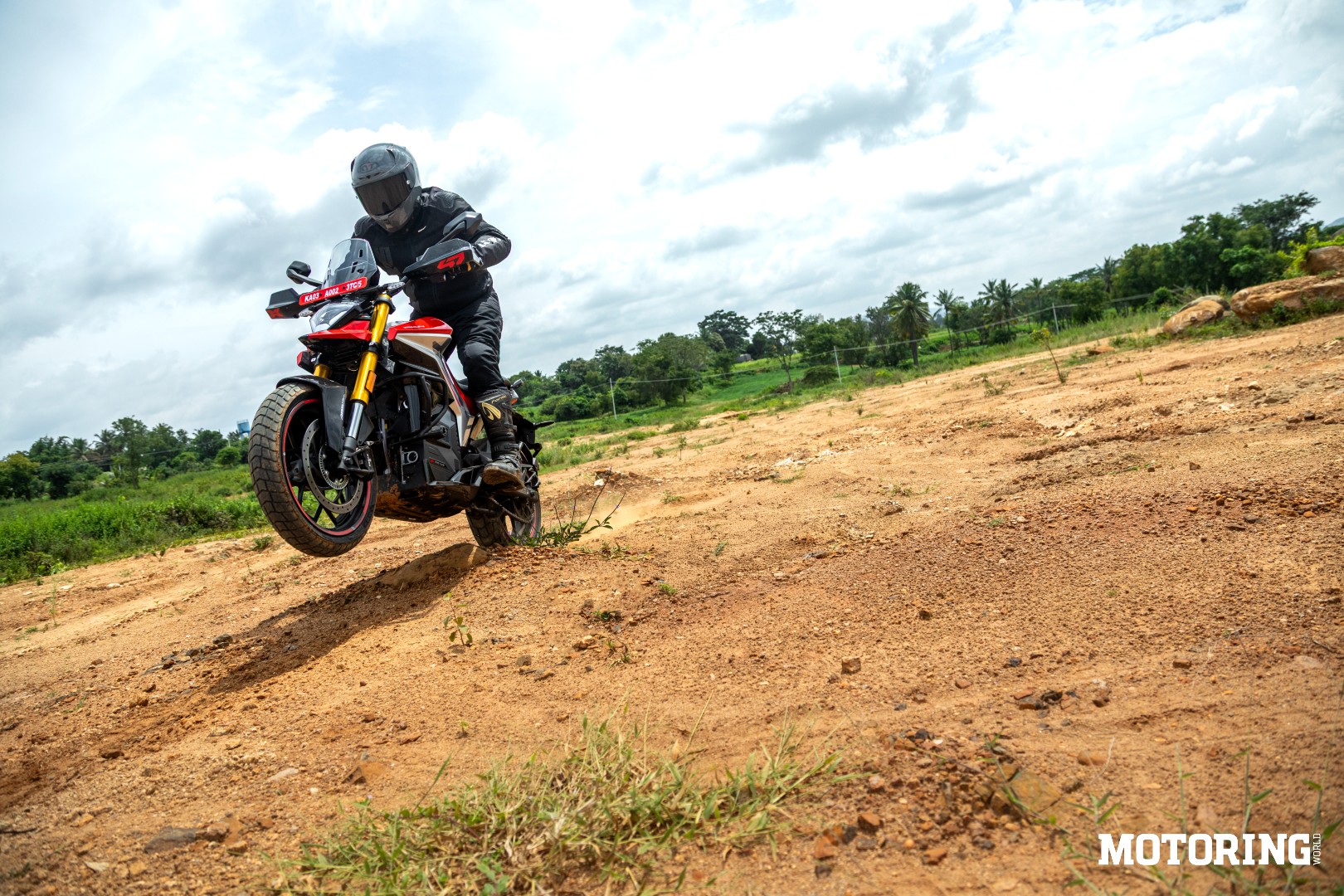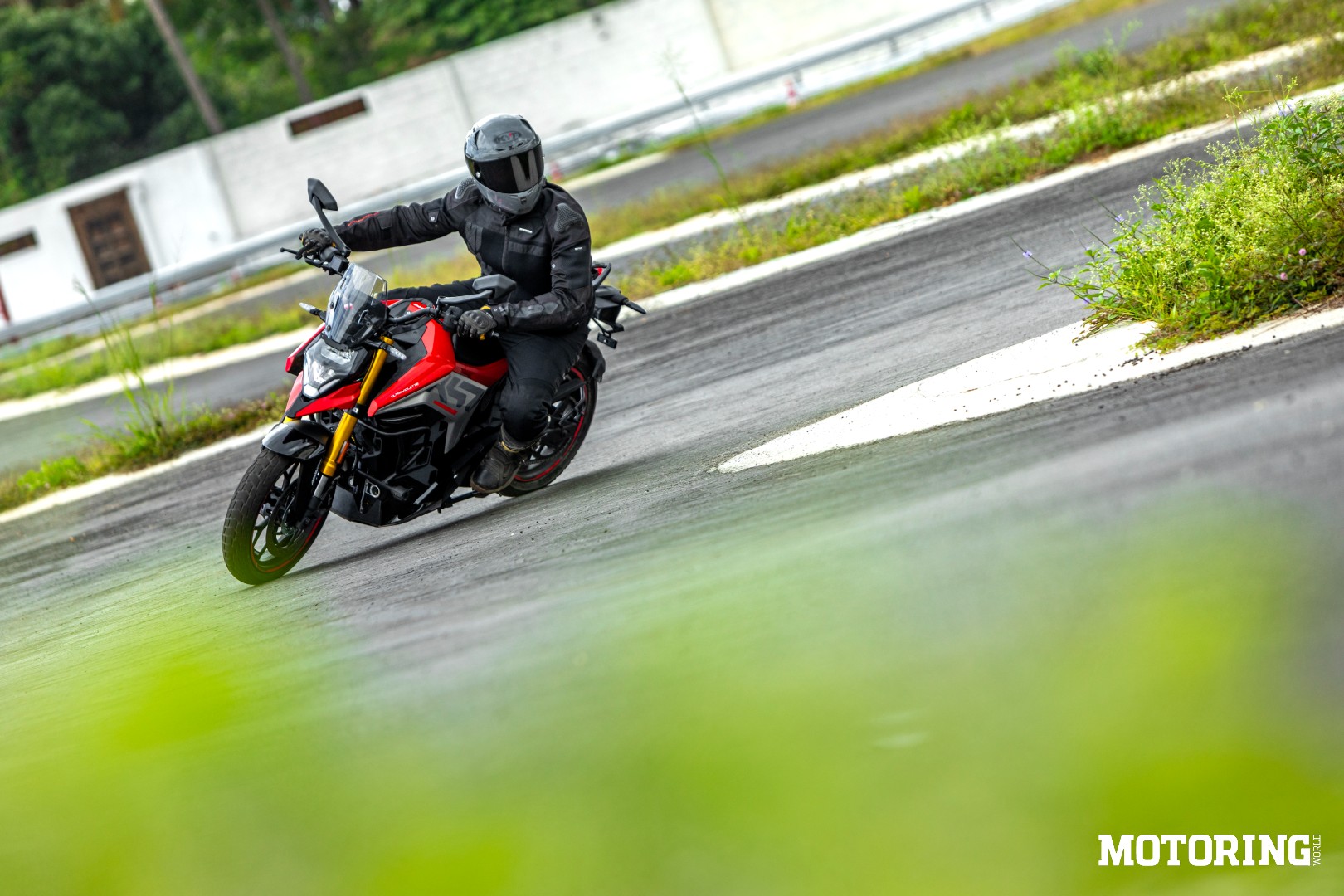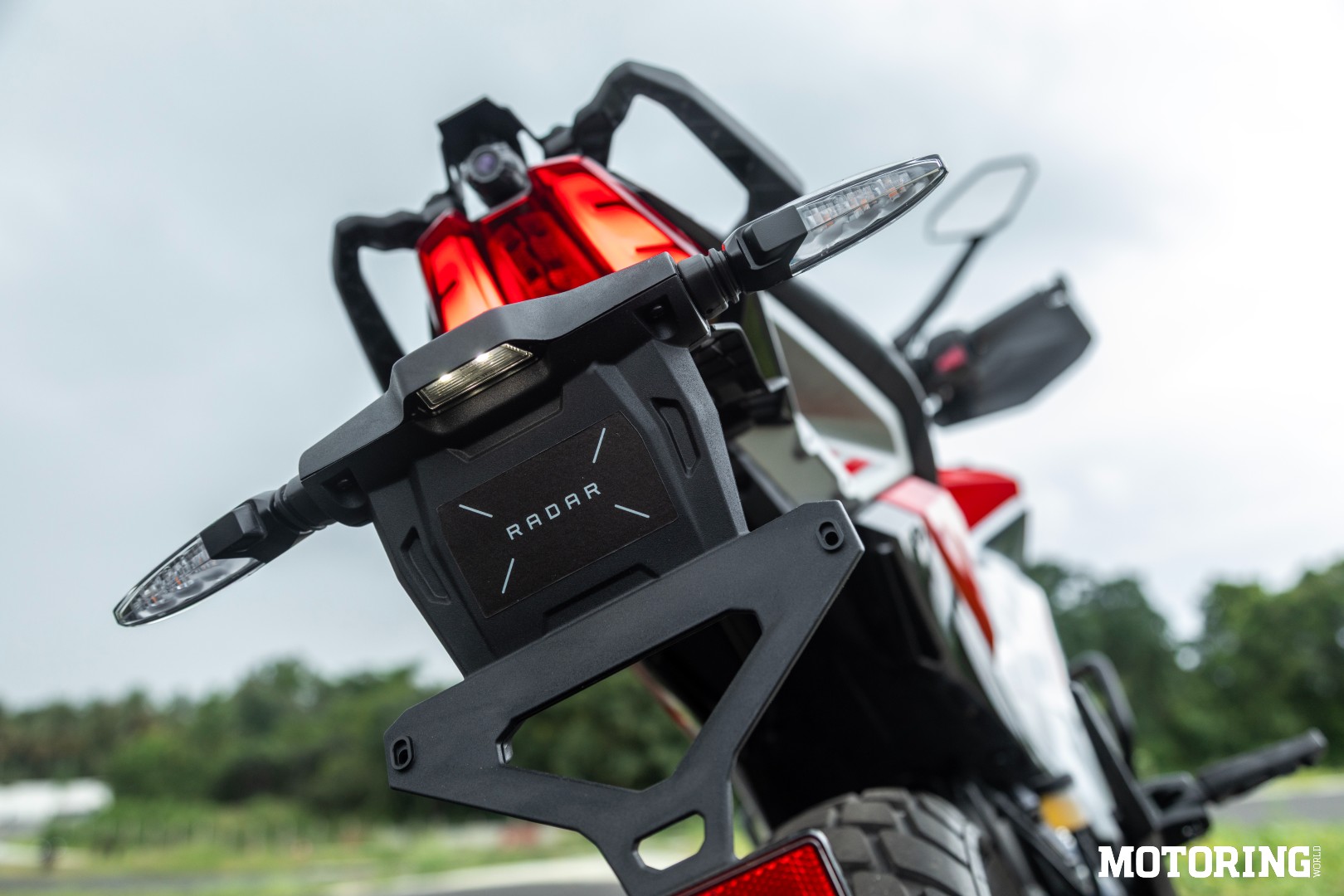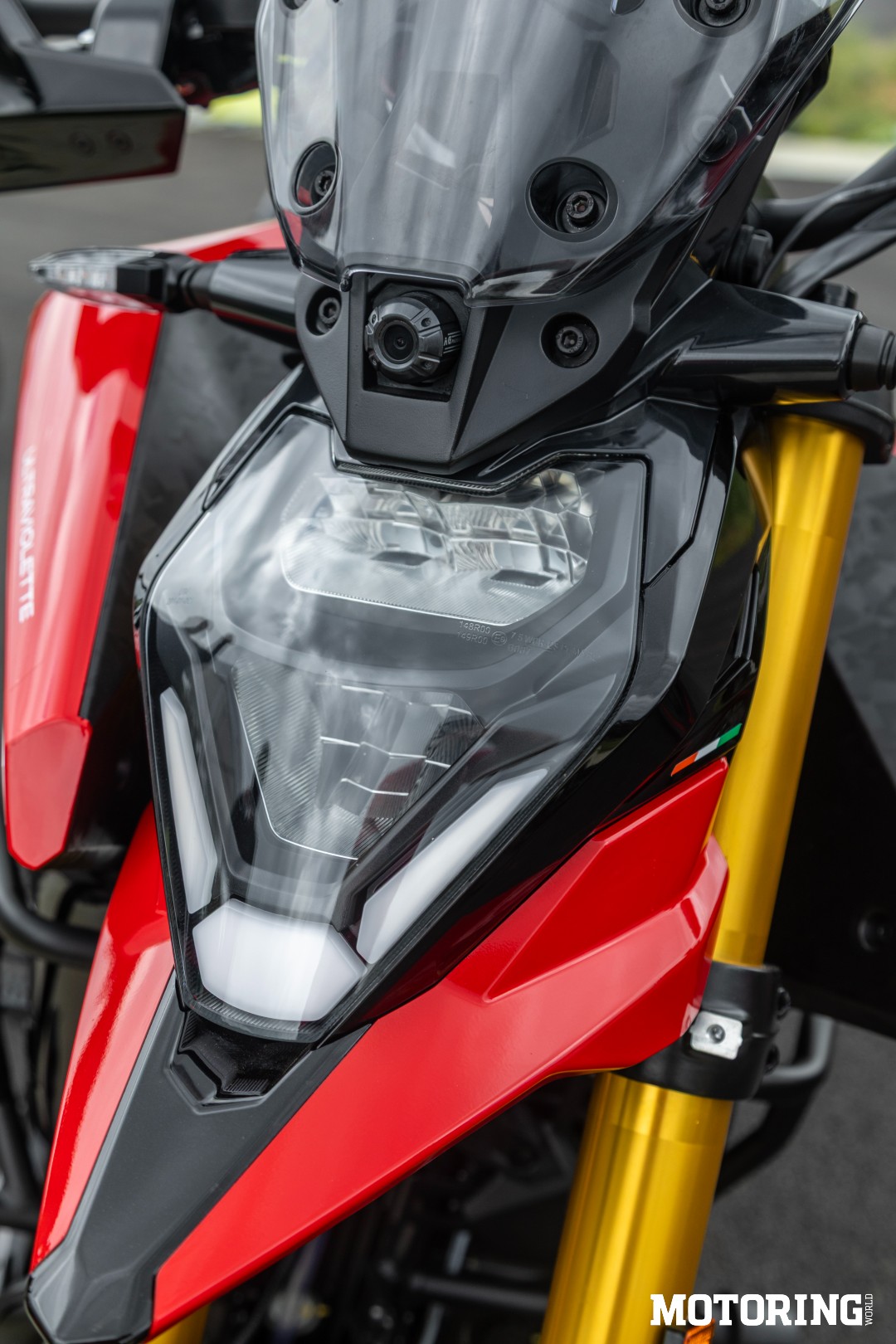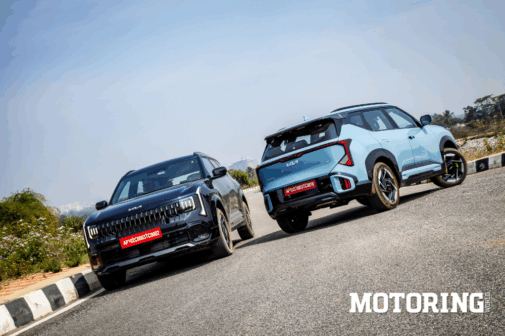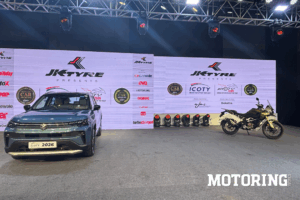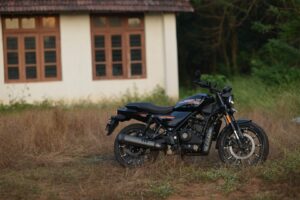Some two-wheelers are so outlandish that even the idea feels like fiction… until one’s parked right in front of you. Who would have imagined we’d be in a world with ADV scooters, three-wheeled motorcycles, 200-bhp crossovers and supermoto-based tourers? Yet time and again, these ‘rebels’ break free from the moulds we’ve built for two-wheelers — and that’s exactly what makes them irresistible. They’re uncharted, audacious, impossible to ignore. And joining this list is an adventure-capable electric motorcycle — the Ultraviolette X-47.
Seeing it in the flesh brought a wide grin to my face. It looked unmistakably Ultraviolette, yet so different from the F77s. The compact headlight remained but now wore a flyscreen on top and an ADV-style beak below. Even the tail-light wasn’t new, but it sat proudly in a unique cast-aluminium subframe. And the wheels? Same size as before, but now wrapped in dual-purpose tyres.
Of course, just bolting on knuckle guards, dual-purpose tyres and some ‘tough-boy’ styling wasn’t going to cut it. Ultraviolette reworked the F77 frame by relaxing the rake angle by a degree, added long-travel suspension, a new steel box-section swingarm and revised the final drive. The result? A menacing-looking motorcycle that had me instinctively drawing parallels with a certain Italian supermoto-tourer. You can guess what happened next.
Developing a true crossover is tough. It’s supposed to combine road manners and long-distance comfort without compromising much off-road. Build one with 40 bhp and a 207-kg kerb weight and it gets even tougher — or so I presumed. But somehow, these young guns at UV nailed it.
The moment I sat on the 820-mm seat, everything felt just right. The handlebar was tall and wide enough to give me relaxed yet commanding leverage, and the footpegs were slightly rear-set but not so much as to ruin touring comfort. Soon, I set out to do some proper ‘crossover’ things.
First up was a B-road with ripply concrete, and the suspension smoothed out every imperfection. Naturally, to ‘test’ its limits, I ventured onto a trail. Standing on the pegs, leaning forward, weaving through dense foliage, I barely noticed the surface below. The suspension still hadn’t disappointed. In fact, I was beginning to trust it with much rougher stuff.
Lost in daydreams of ridiculous ADV stunts, I suddenly found myself in a barren expanse where every rock and boulder dared me to launch the X-47 off it. Like a dog unleashed in a park full of balls, I went for it — only to be reined in by traction control. With TC off and rear ABS disengaged, I twisted the throttle again, sending all 62.2 kgm to the rear wheel, clawing at the earth and sliding the back out. It was ridiculous… ridiculously fun. Recalibrating my brain for the surge of torque, I hit another stretch, caught some air, and though I braced for a hard landing, the bike soaked it up impressively. The only hitch was that upon touchdown the motor cut out — tolerable — but what wasn’t was the ABS calibration. Tuned for tarmac, it tended to intervene just when I needed braking most on the trail. That was my cue to head back to the blacktop… which happened to be a race track.
Ultraviolette motorcycles have always been fun on a track and this one had no reason to be different. Although wary of the MRF Revz AT tyres, which hadn’t let me down so far, I had to be careful not to scrape the pegs too often. Cornering clearance was decent but not infinite. This bike wasn’t meant for track duty — at least not with stock suspension settings. The ride was too soft to really push; the suspension wouldn’t settle, something that could be fixed by cranking up preload at both ends. Still, the motor kept urging me on.
Yes, it’s the same motor as the F77 but with a bigger rear sprocket. Ballistic mode was my default for the entire ride. Even so, the motor felt as friendly as ever. Off-road, it took a couple of seconds for Ballistic to go fully ballistic, but once in the flow state, that delay faded away. The brakes, too, were up for the abuse, and I dialled the regen to max to take some pressure off them.
After the hot laps, Ultraviolette ushered us into a small section of the track cordoned off for tech demos. This is where the X-47 revealed its other side — the one where I could ease off the throttle and let the radar-based rider aids and the integrated dashcam system show off their ‘skills’.
Being the first Indian-made bike to feature radar is bragworthy, and the system would light up the console and flash the alert on the mirror in case someone was trying to slip past from the blind zones. And to check if I was getting the alerts, I had a constant gaze on the mirrors or the console. For me, the alert lights weren’t in the field of vision to seamlessly integrate into my riding experience. Thankfully, Ultraviolette is providing its Hypersense radar tech as standard on the bike. What’s not standard is the integrated charger — something that would have been of more use considering the bike’s intended purpose. However, at the time of writing this, Ultraviolette hadn’t revealed the pricing of the optional integrated charger or the dashcam. But do note, the extra screen only shows what the cameras see and can’t be used to access navigation.
But for all the tech wizardry, the X-47’s biggest headline may be its price. At ₹2.74 lakh onwards, it’s hard to ignore — even if the 10.3-kWh battery variant (with its claimed 323-km range) will likely cost about a lakh more. Ultraviolette also offers four different charging options plus UV Lync to let you plug into any car charger. That means the X-47 isn’t just a wild concept anymore; it’s a genuinely usable, buy-it-today adventure EV.
And that’s the thing — some ideas are too wild to stay locked up in a sketchbook. The X-47 is an EV that’s part trail hooligan, part tarmac tamer, and all nerve. It’s not perfect (what first attempts are?) but it’s audacious, and that alone makes it irresistible. If this is Ultraviolette’s idea of an adventure bike today, I can’t wait to see what sort of mischief it cooks up with the Shockwave.





